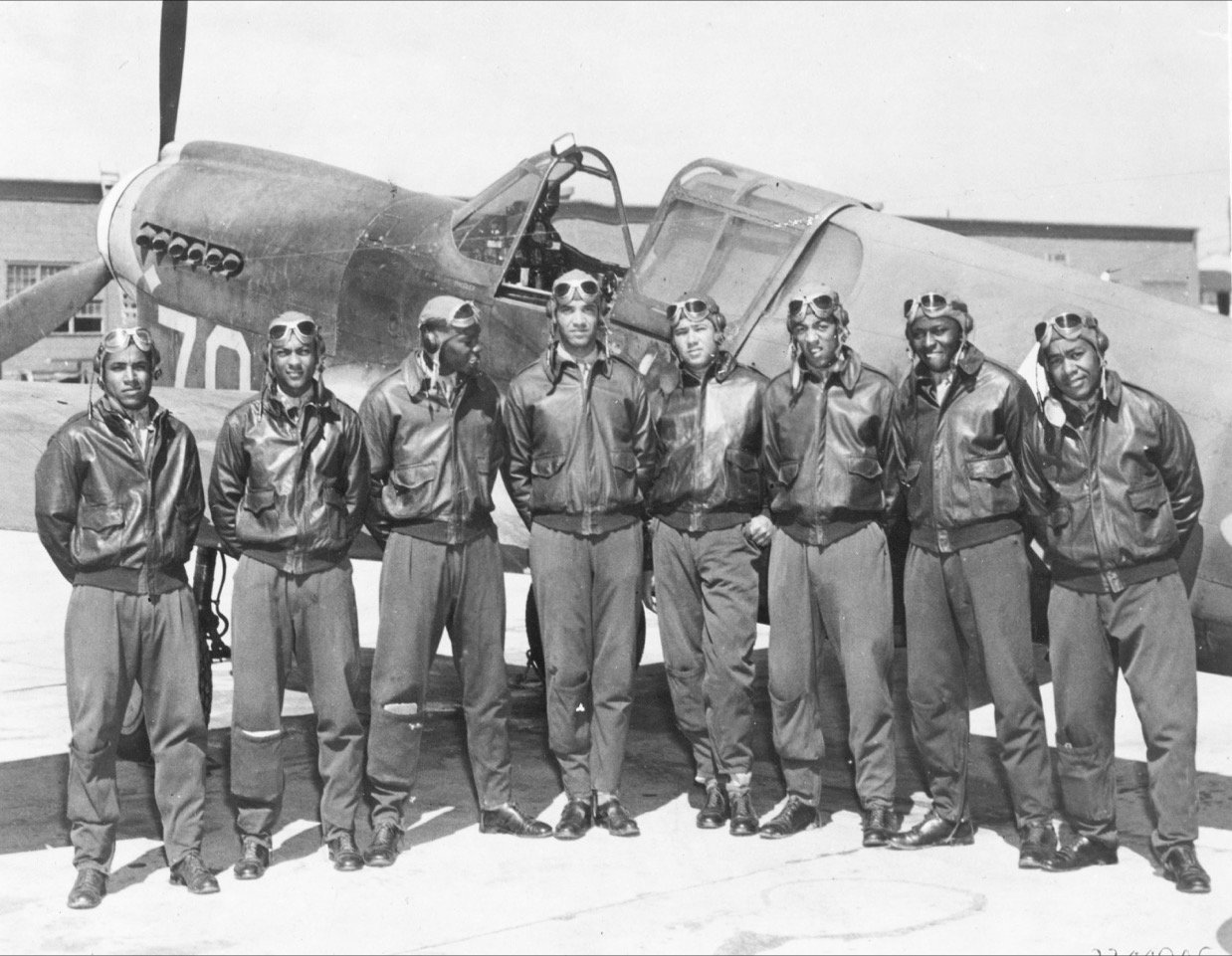Tuskegee Airmen achieved in WWII and beyond
The Tuskegee Airmen are renowned for confronting racial bias in the military and achieving stellar combat records in World War II.
But their achievements did not end with the war, according to Reynard Burns, public relations officer of the Tri-State Chapter of the Tuskegee Airmen, and Patt Terrelongue, a past president of the chapter who is the daughter of Tuskegee Airman Victor W. Terrelongue, who spoke at a seminar hosted by the Nassau County Historical Society on Feb. 5 as part of Black History Month.
Burns related the oppressive impact of a 1925 U.S. Army War College study called “The Use of Negro Manpower in War.” The study claimed that Black soldiers were less able than white soldiers, despite the outstanding records of Black military men such as Benjamin O. Davis Sr., who held the rank of captain at the time of the study and had served in the U.S. military since the 1898 Spanish-American War.
The 1925 study hardened the lines of racial segregation in the U.S. military, Burns said, making it much tougher for any Black person to become a war pilot. But when the Civilian Pilot Training Program was started in 1938, a number of historically Black colleges and universities participated, starting with Tuskegee University. In 1940, when President Franklin D. Roosevelt opened the door for all races to train for all duties in the military, a cadre of young Black pilots already existed.
The program for training Black pilots for military service began in 1941. It was initially called the “Tuskegee Experiment.” But because that name recalled the infamous 1932 “Tuskegee Study of Untreated Syphilis in the Negro Male,” the name for Black pilots program was changed to the “Tuskegee Experience.”
Among the first pilots in the Tuskegee Experience was Benjamin O. Davis Jr., whose father had just become America’s first Black brigadier general.
Davis Jr. and many others boldly resisted the racial bias that permeated the U.S. military. Although all races could legally serve in all capacities, legal racial segregation still hindered opportunities for Black military.
First Lady Eleanor Roosevelt joined the fight on March 29, 1941.
“Eleanor Roosevelt insisted she could fly with a Black man as a pilot,” Burns said. The plane was piloted by C. Alfred Anderson, one of the Black flight instructors. Roosevelt then insisted on a publicity photo to prove that Black pilot ability equaled that of whites.
Roosevelt gave the Tuskegee Experience a helpful boost, but it was the unflinching determination of the Black pilots themselves that carried them to amazing achievements during World War II, and sustained them afterward.
Patt Terrelongue described the journey of her father Victor, who graduated at age 16 from Aviation High School in Queens, but had to overcome one racially motivated obstacle after another to enter the military. At last he boarded the train from New York to Alabama to start his military pilot training.
“But at the Mason-Dixon line,” said Patt Terrelongue, “the Black soldiers were forced to ride at the front of the train directly behind the engine, where they got covered by coal dust. Bill [William M.] Wheeler joked that he really was black by the time they reached Tuskegee!”
Victor Terrelongue, however, did not rise when ordered and was inexplicably allowed to keep his seat.
At the war’s end, he was with the Tuskegee Airmen who came home to New York City, yet were not permitted to join the victory celebration in Times Square.
Mary Anne Watson, the daughter of Lt. Col. Spann Watson, grew up in Newburgh and Westbury knowing only that her father had gotten his pilot wings in July 1942 at Howard University, fought in the war, and was then stationed at Mitchel Field.
“I had no idea of the Tuskegee Airmen stories until I was an adult,” Watson said. But the struggle against segregation was made painfully evident to her when, while her family was stationed at Stewart Air National Guard Base in Newburgh, her father began construction of their home in Westbury.
“My father would drive down to keep checking on the house,” said Watson. “He found pipes filled with cement one time, and later the walls were vandalized.”
Nonetheless, by 1962, Spann Watson had successfully moved his family into their home.
The presenters detailed many more achievements of the Tuskegee Airmen, known as “Red Tails” because they painted the tails of their P-47 planes a distinctive red. Movies and books have been created to celebrate them throughout the decades since World War II.
Another mark of their enduring legacy is the 2021 establishment of the RedTail Flight Academy at New York Stewart International Airport, west of Newburgh. Part of the Lee A. Archer Jr. Red Tail Youth Flying Program, the academy has been formed to address the lack of diversity in the American aviation industry.
Students interested in the RedTail Flight Academy can contact Glendon Fraser, (914) 260-8288 or Info@Tai-ny.org.






